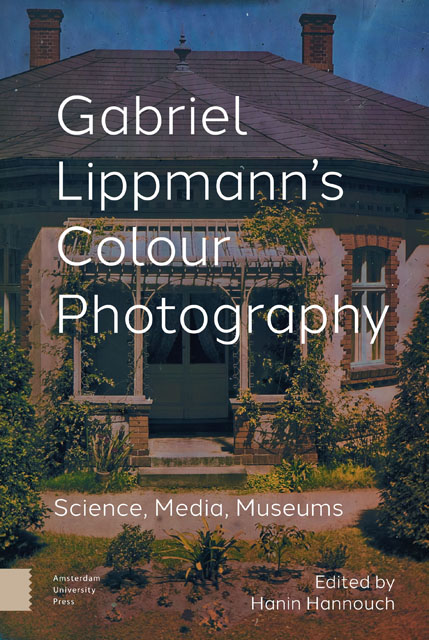Book contents
- Frontmatter
- Table of contents
- Gabriel Lippmann’s Colour Photography: A Critical Introduction
- Part I The Science of Colour Photography and the Colour Photography of Science
- Part II Media History, Aesthetics, and Culture
- Part III Contemporary Reception and Future Trajectories
- Afterword: Building Bridges over Standing Waves
- Index
Gabriel Lippmann’s Colour Photography: A Critical Introduction
Published online by Cambridge University Press: 16 November 2022
- Frontmatter
- Table of contents
- Gabriel Lippmann’s Colour Photography: A Critical Introduction
- Part I The Science of Colour Photography and the Colour Photography of Science
- Part II Media History, Aesthetics, and Culture
- Part III Contemporary Reception and Future Trajectories
- Afterword: Building Bridges over Standing Waves
- Index
Summary
Abstract
This introduction, in lieu of a streamlined biography of physicist Gabriel Lippmann (1845–1921), complicates photography historian Georges Potonniee's three canonical predicates about Lippmann's interferential colour photography. These predicates, which have shaped most studies about him so far, are: Lippmann's association with France, his position as the sole inventor of interferential colour photography, and the myth of the “non-use” of this medium. After presenting the state of the art, the introduction offers readers interdisciplinary methods and considerations that embrace the complexity of the interferential image, positioning it at the interplay between science, media, and museums.
Keywords: Gabriel Lippmann, interferential colour photography, Wilhelm Zenker, media history, history of photography, history of science
Who made any money out of colour photography by the interference method? No one. Nevertheless, would anyone dare to challenge the right of [Gabriel] Lippmann to be called an inventor? (Potonnieé 1936, 126).
In his seminal Histoire de la découverte de la photographie (1925, translated in 1936 by Edward Epstean), photography historian Georges Potonniée mentions physicist and photographer Gabriel Lippmann (1845–1921) in passing as he charts the claims of both Louis-Jacques-Mandé Daguerre (1787–1851) and Joseph-Nicéphore Niépce (1765–1833) to the first photograph. The commercial success of the daguerreotype long overshadowed the scientific contribution of Daguerre's collaborator Niépce. To stake a larger claim than what has been attributed to Niépce in the history of photography, Potonnieé bolsters his argument by referring to Gabriel Lippmann whose own input, though significant to colour photography, has been consigned to oblivion since it proved to be financially unviable. Yet, for Potonniée, its commercial failure does not diminish the scientific achievement underpinning it, nor does it, as this book contends, justify its marginalisation in the history of photography.
Lippmann disclosed a colour photograph on glass featuring the spectrum of light on February 2, 1891 at the French Académie des sciences in Paris. The photographic process Lippmann used is called “interferential colour photography,” since the colours visible in the image are the result of light waves “interfering” with their own reflection. This interference principle allows us to see rainbow colours in soap bubbles or in seashell nacre. Lippmann had thus succeeded in recording these optical standing waves in a single-layer, ultra-fine-grain emulsion made from silver iodide and/or silver bromide in albumen.
- Type
- Chapter
- Information
- Gabriel Lippmann's Colour PhotographyScience, Media, Museums, pp. 7 - 28Publisher: Amsterdam University PressPrint publication year: 2022



